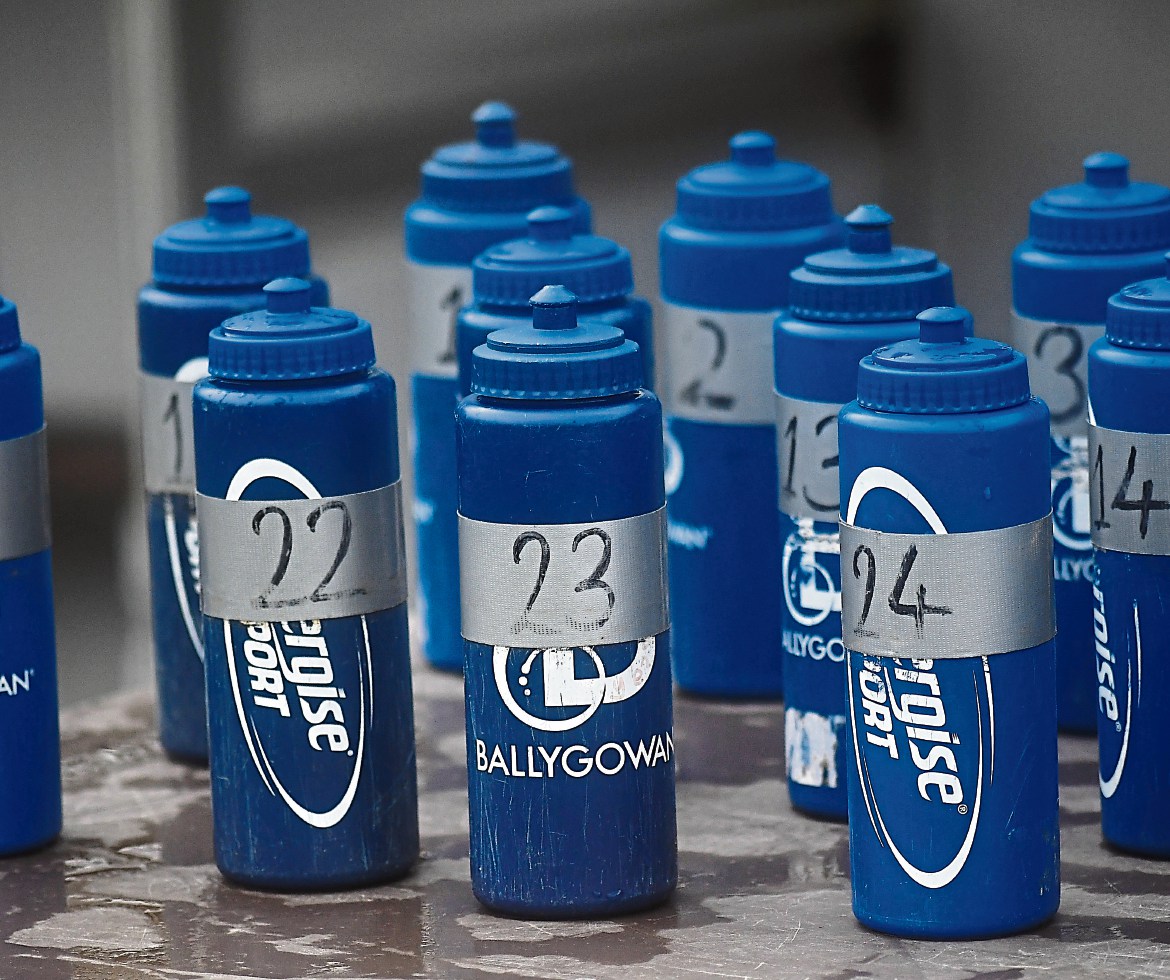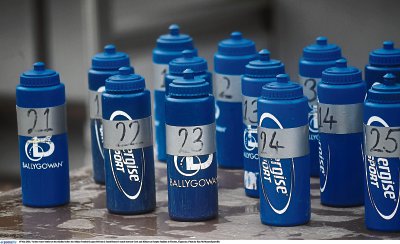FOR many of us, it won’t be breaking news that water is essential for life and optimal physical well-being. If we add on regular physical activity to this, our body’s demand for water will be greater.
When we exercise, our body’s requirements for fluid increases. Why? Well, water has many important roles in the body, including maintaining blood volume and regulating body temperature. With this in mind, when we exercise, the body cools itself down by sweating. However with this comes a loss of body fluids (and electrolytes), which if not replaced, will result in dehydration.
Although hydration should be an important nutritional factor that all GAA players consider all season long, it is particularly important to nail down in the summer months, as our sweat production increases at higher temperatures and increased training intensity. In fact, a recent study found that approximately 38 per cent of Gaelic footballers go into matches dehydrated. But how will this impact the game for them?
The impact of dehydration on performance
It is well documented that dehydration severely impacts both an athlete’s physical and mental performance.
How? An individual will experience an increase in heart rate and body temperature, and with that comes an increased perception of how hard the exercise is. In addition, an athlete will likely experience early fatigue onset and impaired skill level if their hydration needs are not met.
However, not only are we impacted physically from poor hydration, but our mental alertness can also be compromised (including both concentration and decision-making ability) alongside early onset of mental fatigue. Other side effects include risk of nausea, vomiting and muscle cramping when hydration needs are not addressed around exercise. So, how can we look to avoid this?
How can I monitor my hydration?
Of course, there are very fancy methods of monitoring hydration and sweat rates in sport (many of which are lab-based methods) –however, for the larger population it is not always feasible to undergo such testing. In everyday scenarios, we can monitor our hydration through one very simple method: urine colour. When you go to the bathroom, it is a smart idea to keep an eye on your urine colour. If your urine is a pale yellowclear colour, this is indicative you are hydrated, however the darker your urine colour, the greater the degree of dehydration.
It is also good practice to track your fluid loss throughout a training session or match. How I tend to do this with my athletes is to take body weight immediately before the session (in minimal clothing and shoes off) and then take body weight immediately post session (in minimal clothing and shoes off). I commonly see body weight losses of 1-3kg after a pitch-based session, largely due to sweat losses. So, now we have recognised a fluid loss over the session, what should we do about it? Multiply your body weight loss by 1.5 and this will provide a target value of fluid intake for the rest of the day e.g., a body weight loss of 2kg x 1.5= 3 litres of fluid to be replaced throughout the remainder of the day.
How much fluid on a daily basis?
Although the amount of fluid required, and timing of intake will be dependent on each individual athlete, below are a few general tips to optimise your individual hydration:
Always go into a training session or match hydrated by ensuring regular fluid intake the day beforethe day leading up to the sessionmatch (avoid drinking excessive amounts before a session as this can have you running to the toilet).
If you don’t like the taste of regular water, flavour it with dilute juice, lemon or lime.
After a session or game, go for milk-based recovery options, as not only will this kick start the recovery process, but is also a great rehydration option due to fluid and electrolyte make up.
Busy day at work? Take a refillable water bottle with you and aim to have it empty by lunch. Refill and aim to have empty again by the end of the working day. Setting targets can be a great way of working towards your hydration needs.
Eat a variety of fruit and vegetables (they all contain water).
Be smart with your water break in games – take small sips of water or a sports drink.
Humidity, duration and intensity of sessions will determine the type of fluid you will require around training. Plain water can be effective around low intensityshort duration sessions, when sweat rates will be minimal. However, as the intensity and duration of the session increases (e.g. a 60-70 min match), a sports drink such as Powerade, Energise or Lucozade Sport would be favoured due to their carbohydrate (for energy), fluid and electrolyte blend.
To conclude, fluid needs of an athlete are highly individual as there is no ‘one size fits all’ approach when it comes to hydration (or nutrition for that matter).
Although the above is general guidance, it would be recommended to work with a qualified professional to develop an appropriate hydration plan for your needs and requirements over the coming months.
Anne Marie is a Sport Dietitian who works with Derry GAA and Ulster Rugby.
Contact her for more information @theperformancedietitian or via email on annemariemulholland nutrition@outlook.com.
Receive quality journalism wherever you are, on any device. Keep up to date from the comfort of your own home with a digital subscription.
Any time | Any place | Anywhere













